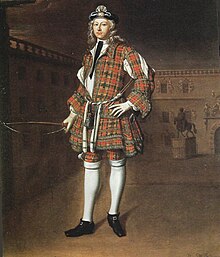Sir Archibald Grant, 2nd Baronet
He was expelled from the House of Commons for his involvement in the frauds on the Charitable Corporation, and returned to Scotland where he devoted his time to improving his estate.
[3] He was a member, in February 1729, of the parliamentary Gaols Committee, chaired by James Oglethorpe, which visited the Fleet and Marshalsea prisons to prepare a report for parliament on the conditions in which debtors were being held.
[3] In London, Archibald Grant became involved in share speculation, possibly from the collapse of the South Sea Bubble.
[8] Grant also bought the mines at Strontian in Scotland for a modest sum and sent Derbyshire miners there to develop them in 1729, also a relative of his wife, to manage them.
[8] His Charitable Corporation partners were told of some mines in Scotland in which he and Sir Robert Sutton another director was concerned, and proposed that the York Buildings Company should lease them, hoping the enhance the value of its stock.
[10] After Grant's expulsion from the Commons, he returned to Scotland and devoted his time to improving his Monymusk estate.
Grant stood for Aberdeenshire at the 1747 British general election but gave up when he learnt that the Duke of Argyll was supporting a Pelham candidate.
When Argyll heard that Newcastle was proposing to make Grant sheriff of Aberdeenshire as a consolation for not being returned for the county, he wrote: ‘This requires great consideration, for the blot in his reputation takes place here as well as in England’.
[11] His second wife, Anne (died before 1744), daughter of Charles Potts of Castleton in Derbyshire, was the mother of his heir Sir Archibald Grant, 3rd Baronet.



